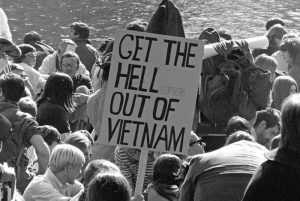
Views: 1135
Despite the popular belief that because of D-Day, the US and the western allies won WW2 in Europe, the truth is that WW2 had already been won in Europe by Soviet Russia when it defeated the German army in the eastern front. By 1944, Nazi Germany had already lost the war to the Soviet Union, which had basically annihilated the Wehrmacht in the eastern front and the Red Army was racing its way towards Berlin, with the German army unable to hold it off, and barely able to offer up any meaningful resistance.
Just to put things into perspective, while the Red Army suffered enormous losses of 8.7 to over 10 million military deaths during the war, the Red Army was also responsible for around 80% of all German Combat casualties in WW2. Almost 4 million Third Reich troops went into the eastern front to fight against Soviet Russia, while by the time the western allies landed in Normandy all that was facing them was around 50,000 German soldiers. The western allies, as the historian Professor Norman Davies notes, were a “peripheral sideshow” in the European theater of war. Even after the successful landing in Normandy all that all was left facing the western allies in France and Western Germany was a small number of regular German divisions that were bolstered by what was mostly German teenagers and senior citizens who had little or no training, and even then the allies were having great difficulties in defeating them and pushing into Germany.
Many in the west argue that “Lend- Lease” was what saved the USSR in 1942, and allowed them to win the war. In reality however, the Soviets had already gained the upper hand on their own account befor Western aid began to reach them in serious quantity. The Arctic convoys that were sent from Britain to Murmansk, beginning in 1941, were extremely perilous and hardly defensible in terms of tonnage delivered against tonnage lost. They were a bold gesture of solidarity from the western allies to Soviet Russia, but hardly a game changer and certainly not what “saved” the USSR from Nazi Germany. By 1942 Soviet military production had almost quadrupled then in 1941, despite the German invasion in the USSR, and was well equipped to supply the Red Army with all the tanks, planes and heavy guns they required. The critical years for the Soviet Union did not start in 1943 when Lend Lease was coming on full stream, but in 1941-2, when Western aid was still marginal. At that juncture, the Red Army faced the full brunt and might of the seemingly invisible German army; yet it did not run short of tanks, planes and heavy guns, and in spite of everything, it did hold out. What is more, much of the early Lend-Lease aid was unusable. British tanks were not what the Red Army needed, and a lot of equipment like British army greatcoats (like German greatcoats) were totally unsuited to the Russian winter.
The western allies landing in Normandy on June 6, 1944 was not meant only to open a second front and to help the Soviets defeat Nazi Germany, but mainly to make sure the western allies occupied western Europe. The western allies goal was never to free the whole of Europe from tyranny, because FDR and Churchill had already agreed in the 1943 Tehran conference that Stalin could and would occupy everything but Western Europe. The western allies main goal in D-Day was to make sure that Soviet Russia would not overrun the WHOLE of Europe, and to make sure that at least western Europe would remain free of a Soviet occupation. This was, in fact, the main reason for D-Day, because if it wasn’t for D-Day, the whole of Europe would probably end up under Soviet occupation.
But while the Western allies saved Western Europe from the hordes of marauding and raping Red Army troops, they were more than happy with letting Stalin and the USSR occupy the rest of it, which included one of their key allies during the war, Poland, and to do with it and the rest of Europe as he pleased. As a consequence, the end of WW2, most of Europe instead of being liberated from tyranny continued to live under a brutal dictatorship right up until the dissolution of the Soviet Union in 1991. D-Day did not defeat Nazi Germany or won WW2, but what it did do was to make sure that not all of Europe fell to Soviet hands.
Originally published on 2016-06-06
Source: Dispropaganda
Origins of images: Facebook, Twitter, Wikimedia, Wikipedia, Flickr, Google, Imageinjection, Public Domain & Pinterest.
Read our Disclaimer/Legal Statement!
Donate to Support Us
We would like to ask you to consider a small donation to help our team keep working. We accept no advertising and rely only on you, our readers, to keep us digging the truth on history, global politics, and international relations.
FOLLOW US ON OUR SOCIAL PLATFORMS








